Construction Safety Campaign:
Common Accidents and Toolbox Safety Tips
From falling equipment to collapsing buildings, construction sites are some of the most hazardous workplaces out there. On this page, we explore some of the most common injuries and hazards involved in construction site accidents. We also review safety precautions construction workers, managers, and site owners can take to lower the risk of accidents and injuries on the job.
The threat of falling objects, malfunctioning equipment, slippery walkways, unstable scaffolding, and more exists every time construction workers step onto a job site. In fact, construction work is one of the most dangerous occupations in the country. According to the Federal Bureau of Labor Statistics, “construction workers make up only 5 percent of NYC’s total workforce, but account for 27 percent of work-related injury fatalities.”
At Shulman & Hill, we recognize that spreading awareness of the dangers that construction workers face is vital to creating safer, more productive workplaces in New York and throughout the country. To that end, we’ve compiled a list of the most common construction site hazards, as well as steps employers and employees can take to minimize the risk of accidents.
Slips, Trips, and Falls
Though construction workers face many hazards on a daily basis, falls are especially prevalent. These incidents make up approximately 50 percent of all construction accidents reported in the U.S. each year, and the numbers are on the rise. According to the Bureau of Labor Statistics, the number of construction deaths due to falls, slips, and trips increased by 5.9 percent in 2021.
Slip-and-fall accidents on construction sites can result in severe and even fatal consequences. Some common injuries construction workers sustain during slip-and-fall accidents include:
- Fractured and broken bones
- Spinal cord injuries
- Traumatic brain injuries
- Lacerations and puncture wounds
- Sprains, strains, and tears
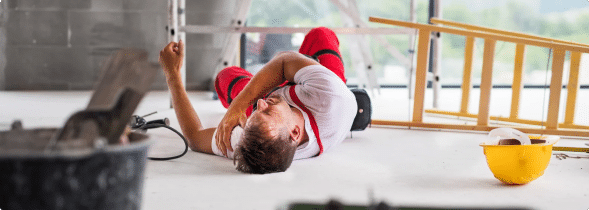
Toolbox Tips to Help
Site managers, supervisors, and workers at construction sites can reduce the number of slip-and-fall accidents that occur in their workplaces by taking appropriate safety precautions, including:
- Installing safety nets and guard rails to prevent falls and protect falling workers from hitting the ground.
- Using harnesses and lifelines when employees work at heights of six feet or more.
- Covering holes and openings, including skylights, to make sure people do not fall through.
- Clearing walkways of debris and liquids and working in covered areas during rainy or snowy weather.
- Regularly inspecting protective equipment, ladders, and stairs.
- Requiring all workers to wear appropriate footwear that does not easily slip.
While some falls are inevitable regardless of what preventive measures are put in place, these tips can lower the number of incidents and protect workers from serious injury when an accident does occur.
Other Physical Injuries
Seemingly ordinary tasks can harm construction workers, particularly if adequate safety measures are not in place. For instance, heavy lifting can cause muscle strains, and frequent bending, turning, and twisting can lead to repetitive motion injuries.
Additionally, defective tools on construction sites, can frequently result in serious injuries. Tools like saws and drills with malfunctioning safety features or lacking proper safeguards can lead to accidental amputations, lacerations, and other severe injuries to construction workers. Inadequate safety mechanisms increase the risk of uncontrolled tool movements and unexpected incidents, jeopardizing the well-being of workers and compromising overall site safety.
Toolbox Tips to Help
Strategies that decrease the likelihood of workers suffering these types of physical injuries include:
- Regularly inspecting, maintaining, and following safety guidelines for all tools on site.
- Investing in automated machinery to lessen the need for harmful repetitive motions.
- Requiring all workers to wear safety equipment and gear, including hard hats and steel-toed boots.
- Using backup alarms on vehicles and movable equipment.
In all cases, keeping workers informed and alert is essential to lower the risk of injury. Workers who are well-rested and receive adequate breaks will find it easier to focus and identify dangers before they get hurt.
Electrical Hazards
Electrical lines and wiring are commonplace on construction sites, which is why nearly half of workplace electrical injuries involve construction workers. These workers may be exposed to multiple electrical threats every day, including:
- Power lines
- Unmaintained equipment
- Wet surfaces
- Faulty wiring
- Poor insulation
When workers are operating in wet conditions, this creates an added risk for electrocution as water creates an easy path for an electrical current.
In addition to burns, electrical injuries cause heart attacks and respiratory arrest, both of which can be fatal.
Toolbox Tips to Help
Most electrical injuries are avoidable, but employers must plan ahead and train their workers to follow safety protocols. Properly grounding and insulating electrical equipment reduces the chances of electric shock, as does using wood or fiberglass ladders rather than metal ones.
Construction workers handling electric wires or power lines should also wear helmets and rubber gloves to protect them from electrocution. Regularly inspecting, maintaining, and replacing equipment also helps limit the risk of electrical injuries.
Falling Objects
The threat of falling or moving objects is a significant concern on construction sites. The Center for Construction Research and Training reports that 22 percent of fatal injuries that construction workers experience on the job are due to harmful contact with objects and equipment. When tools or cargo fall from heights or a piece of heavy equipment swings into a worker’s body, they can inflict serious damage, including concussions, broken bones, and back injuries.
Construction sites are dynamic environments where tools, equipment, and materials are frequently elevated or moved overhead. Common scenarios involve objects inadvertently slipping from elevated platforms, scaffolding, or cranes, posing a danger to workers below. These falling objects can range from tools and building materials to debris, and the impact can result in severe head injuries, fractures, and other traumatic injuries.
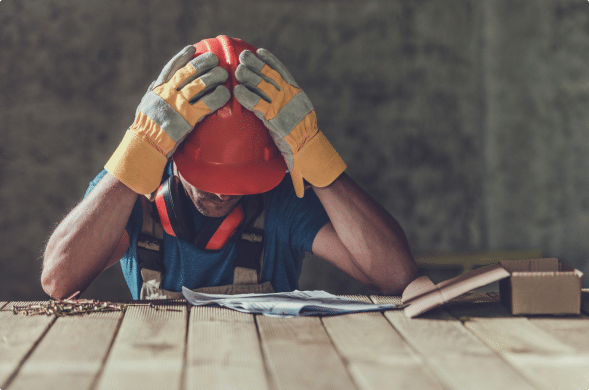
Toolbox Tips to Help
Construction workers can take proactive measures to enhance their safety and mitigate the risks associated with falling objects on construction sites. Here are some ways to help improve safety from falling objects:
- Properly tethering tools and other items to prevent them from falling.
- Wearing appropriate personal protective equipment, including hard hats.
- Regularly inspecting scaffolding, cranes, and other equipment for stability and integrity.
- Establishing designated exclusion zones and warning signs around areas where overhead work is being conducted.
- Providing ongoing safety training and communication among team members about potential falling object hazards.
By fostering a culture of vigilance, adherence to safety protocols, and continuous education, construction workers can significantly reduce the risks associated with falling objects and ensure a safer working environment.
Hearing Loss
Construction sites are noisy work environments, with jackhammers, saws, and other equipment regularly in operation. Approximately 14 percent of all construction workers have difficulty hearing. As their hearing loss progresses, it can negatively affect their work, not to mention their day-to-day personal lives.
Hearing impairment can also increase the risk of accidents on the job, where workers must be able to hear emergency broadcasts, alarms, and nearby vehicles. It can eventually make it difficult for workers to remain employed, particularly if they develop tinnitus, which causes a persistent ringing or rushing sound in one or both ears.
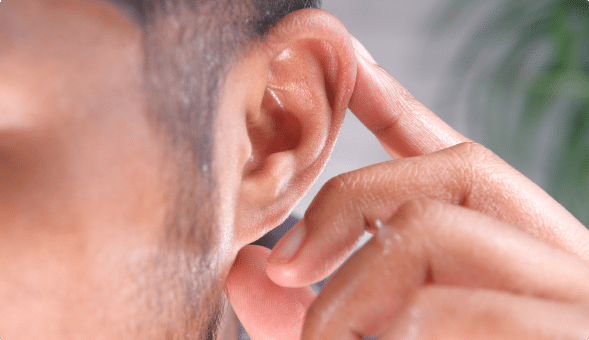
Toolbox Tips to Help
A few simple steps can make a significant difference in the amount of hearing damage that construction workers experience. To minimize the risk, employers can implement these practices:
- Use safety equipment – When workers are near loud noise, they should wear appropriate gear, including earplugs and muffs, to protect their hearing.
- Follow government guidelines – The Occupational Safety and Health Administration has standards in place that outline safe noise-exposure limits in the workplace.
- Use monitoring tools – Site managers should use tools to accurately test sound levels at different locations.
- Plan strategically – When possible, invest in quieter equipment, move power tools away from high-traffic areas, and use temporary barriers to block noise.
Although it may not be realistic to eliminate loud noise at construction job sites, protecting workers from excessive exposure is an attainable goal.
Lung Issues and Chemical Hazards
Many people are aware of the risks of asbestos exposure at construction sites, but there are a variety of other chemicals and materials that can also pose a threat. They include:
- Silica
- Lead
- Spray paint
- Carbon monoxide
- Chemical solvents
Construction workers are more likely to suffer from severe respiratory illnesses and other conditions due to the widespread presence of these hazards. For example, a recent study found that construction workers are at a much higher risk of developing restrictive spirometry pattern lung disease.
Further, people who have worked in the construction industry for five years or longer have a significantly increased risk of developing lung cancer. Coughing, shortness of breath, and asthma are also especially common among construction workers.
Toolbox Tips to Help
The most important tool to protect construction workers from hazardous materials is personal protective equipment, especially respirators, which prevent workers from inhaling airborne substances like toxic gasses and asbestos fibers. Hazmat suits, gloves, and boots may also be necessary when workers handle toxic chemicals. Using fans to increase ventilation may offer an additional layer of protection.
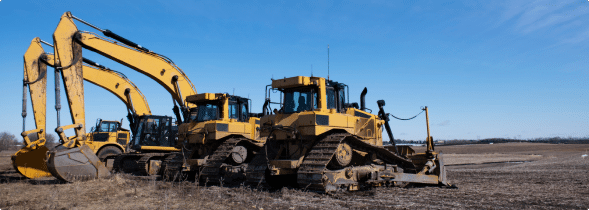
Cardiovascular Health
Approximately 1 in 25 construction workers suffer from cardiovascular diseases. While some people may have a genetic predisposition, workers in the construction industry are also statistically more likely to have certain habits associated with heart disease.
For example, according to the American Heart Association, they’re more likely to use tobacco, get insufficient exercise, and experience difficulty controlling their weight. Work environments can also contribute to these factors, as workers often have to eat on the go and may struggle to maintain a work-life balance.

Toolbox Tips to Help
Leaders of construction companies can’t control workers’ behaviors off the job, but they can educate them and encourage a healthier lifestyle. Possible steps include:
- Providing informational sessions from nutritionists and making healthy snacks available at worksites.
- Participating in biometric screening programs.
- Prohibiting tobacco use, including vaping, at job sites.
- Joining a regional chapter of the Hard Hats with Heart program offered by the American Heart Association.
Training employees to respond to heart emergencies is also a beneficial practice. Offering CPR training and placing automated external defibrillators at job sites empowers construction workers to act quickly if someone experiences a cardiac arrest.
Equipment Safety
Even simple pieces of equipment, such as ladders, can cause injuries when employees don’t use them correctly. Construction workers spend much of their time on and around heavy equipment associated with workplace injuries, such as:
- Backhoes
- Trucks
- Forklifts
- Cranes
- Skid loaders
This equipment is connected to some concerning trends. For example, in one six-year period, 43 percent of fatal worker injuries involving cranes took place in the private construction industry.
Toolbox Tips to Help
Ultimately, a wide variety of potentially dangerous equipment is necessary for construction workers to get their jobs done. These tips can help them stay safe when using this equipment:
- Display signs indicating equipment risks.
- Have workers wear clothing or vests in bright colors to increase visibility.
- Use spotters when equipment is moving near workers.
- Ensure employees have access to the tools they need, such as radios for communication.
- Provide equipment hazard training regularly.
Construction equipment can be dangerous. Construction companies can reduce the risk of accidents on their job sites by teaching workers how to take appropriate safety measures.
Safety Checks and Reporting
Construction employers are responsible for ensuring that job sites are safe and handling issues when they arise. Unfortunately, many workers hesitate to report safety problems because they fear retaliation from their supervisors. They may also be working to meet deadlines and feel that they don’t have time to stop and complete paperwork.
However, when construction companies neglect safety checks and reports, the results can be disastrous. Employees can suffer severe injuries or, in worst-case scenarios, lose their lives because of unsafe conditions.
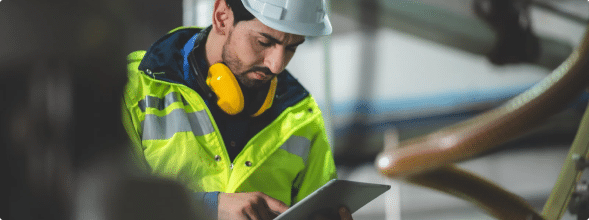
Toolbox Tips to Help
Construction managers and workers are more likely to follow through with safety checks and reporting when there are established processes in place, including:
- Documented explanations of how to conduct safety inspections and submit reports.
- Clearly communicated statements that employees won’t face negative consequences for reporting safety concerns.
- Outlined steps to effectively and efficiently address reports.
- References to OSHA’s construction industry resources.
If construction workers feel that their employers aren’t abiding by safety regulations, they can make a confidential report directly to OSHA and request a workplace inspection.
Improper Training
When employees don’t receive adequate training, they can make fatal mistakes. According to a 2022 survey by the Center for Construction Research and Training, approximately 23 percent of construction employers believe lack of training is the primary cause of struck-by injuries on construction sites.
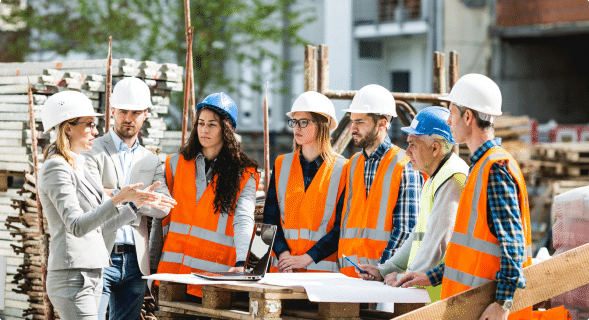
Toolbox Tips to Help
Well-developed training programs and policies are essential components of a successful construction company. They may include things like:
- Requiring all operators of heavy machinery to be certified.
- Clearly posting rules for using different types of equipment.
- Prohibiting the use of distracting devices while using construction equipment.
- Conducting consistent training sessions and frequently reviewing safety procedures.
- Placing posters and signage around worksites to identify and communicate risks.
Shulman & Hill Can Help If You Were Injured in a Construction Accident
The construction industry is a key component of the national economy. It is also one of the most dangerous industries for workers. If you were injured in a construction site accident, do not hesitate to consult with an attorney. You may be entitled to significant legal compensation.
The legal team at Shulman & Hill is here to help. Whether filing a workers’ compensation claim or construction accident lawsuit, we have the knowledge and resources needed to handle your case from start to finish. When working with us, you can rest assured that your claim is being handled with the care and attention it deserves. Contact us today to schedule your free consultation.